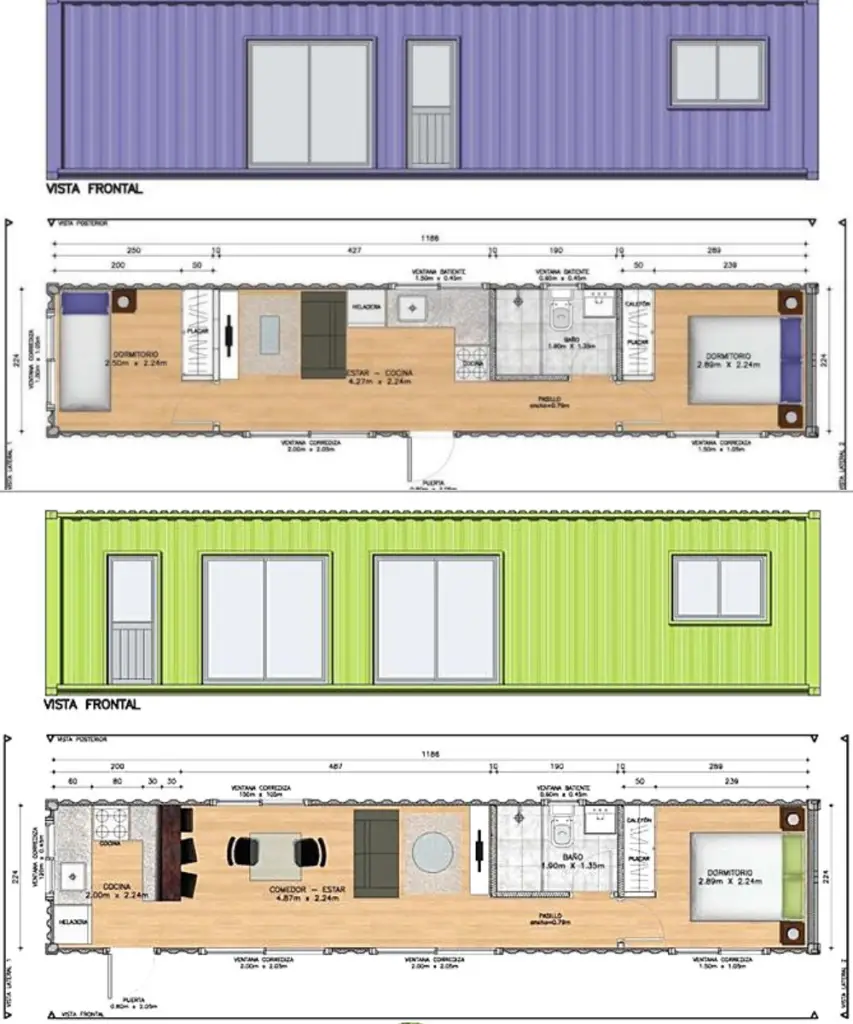
Introduction
Shipping container homes have gained popularity in recent years due to their affordability, sustainability, and unique design. These homes are constructed using repurposed shipping containers, providing an eco-friendly alternative to traditional housing. In this article, we will explore various shipping container homes plans and layouts, offering inspiration for those interested in building their own container home.
1. Single-Container Design

A single-container design is the simplest layout for a shipping container home. It involves using a single container as a self-contained living space. This design is ideal for individuals or couples who prefer a compact and minimalist living environment. The container can be modified to include all essential amenities, such as a bedroom, bathroom, kitchen, and living area.
2. Multi-Container Design

A multi-container design involves combining multiple containers to create a larger living space. This layout offers more flexibility in terms of design and size. By connecting containers horizontally or vertically, homeowners can create spacious rooms or multiple levels within their container home. This design is suitable for families or individuals who require more space and wish to customize their home to suit their specific needs.
3. Container Addition Design

The container addition design involves adding additional containers to an existing structure. This layout allows for expansion and modification over time. Homeowners can start with a single-container design and gradually expand their home by adding more containers as needed. This design is perfect for those who want to start small and gradually grow their container home over time.
4. L-Shaped Design

The L-shaped design utilizes multiple containers to create an L-shaped layout. This design offers versatility and allows for the creation of outdoor living spaces within the enclosed area. The L-shape can be used to create a courtyard, patio, or garden area, providing a seamless connection between indoor and outdoor spaces.
5. Two-Story Design

A two-story design involves stacking containers vertically to create a multi-level home. This design maximizes the available space and provides separate areas for different purposes. The ground floor can house common areas such as the kitchen, living room, and dining area, while the upper floor can accommodate bedrooms and private spaces.
6. Modular Design

The modular design involves combining containers in various configurations to create a unique and customizable layout. This design allows for easy expansion or rearrangement of the living space. Homeowners can add or remove containers as needed, providing flexibility to adapt the home to changing needs or preferences.
Conclusion
Shipping container homes offer a range of layout options to suit different preferences and requirements. Whether you prefer a simple single-container design or a more complex multi-container layout, the possibilities are endless. These homes not only provide an affordable and sustainable housing solution but also allow for creativity and personalization. Consider these different plans and layouts to design your dream shipping container home.